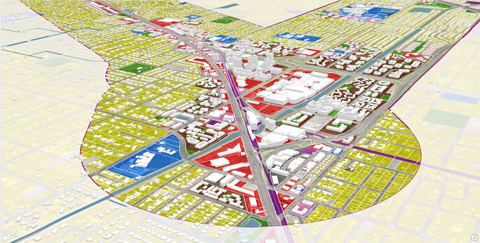Land Use Planning & Visioning
Lead Agency: Miami-Dade Transportation Planning Organization (TPO)
Transit supportive land use plays an important role in the success of major rapid transit investments. It promotes transit use and increases mobility choices for the residents, businesses, and visitors along the corridors. The ultimate purpose of Land use Planning & Visioning Planning is to develop a Land Use Scenario Plan for each of the six SMART Plan corridors. This exercise will provide the technical basis for the development of transit supportive land uses for the six corridors.
SMART Implementation Plan Charrettes
Two series of charrettes will be conducted for each of the six corridors. The first corridor charrette series will be conducted to assist in the scenario development exercise for the task associated with Land Use Scenarios Development and Testing. The second corridor charrette series will be held as part of the corridor visioning work.
Rapid Transit Corridors
Land Use Scenario & Visioning Planning Study
The purpose of LUS&VP is to integrate transportation and land use planning, thereby maximizing the effectiveness of transit investments along the SMART Plan corridors. This report focuses on the LUS&VP activities completed for the Beach and Northeast SMART Plan Corridors, which were studied together due to the study areas overlapping one another between Downtown Miami and Midtown Miami.
- View the Executive Summary
- View the Final Report
- View the Appendices
- View the Beach Corridor Inventory
